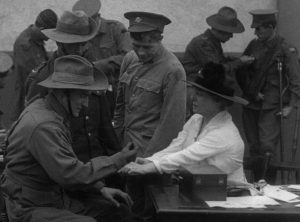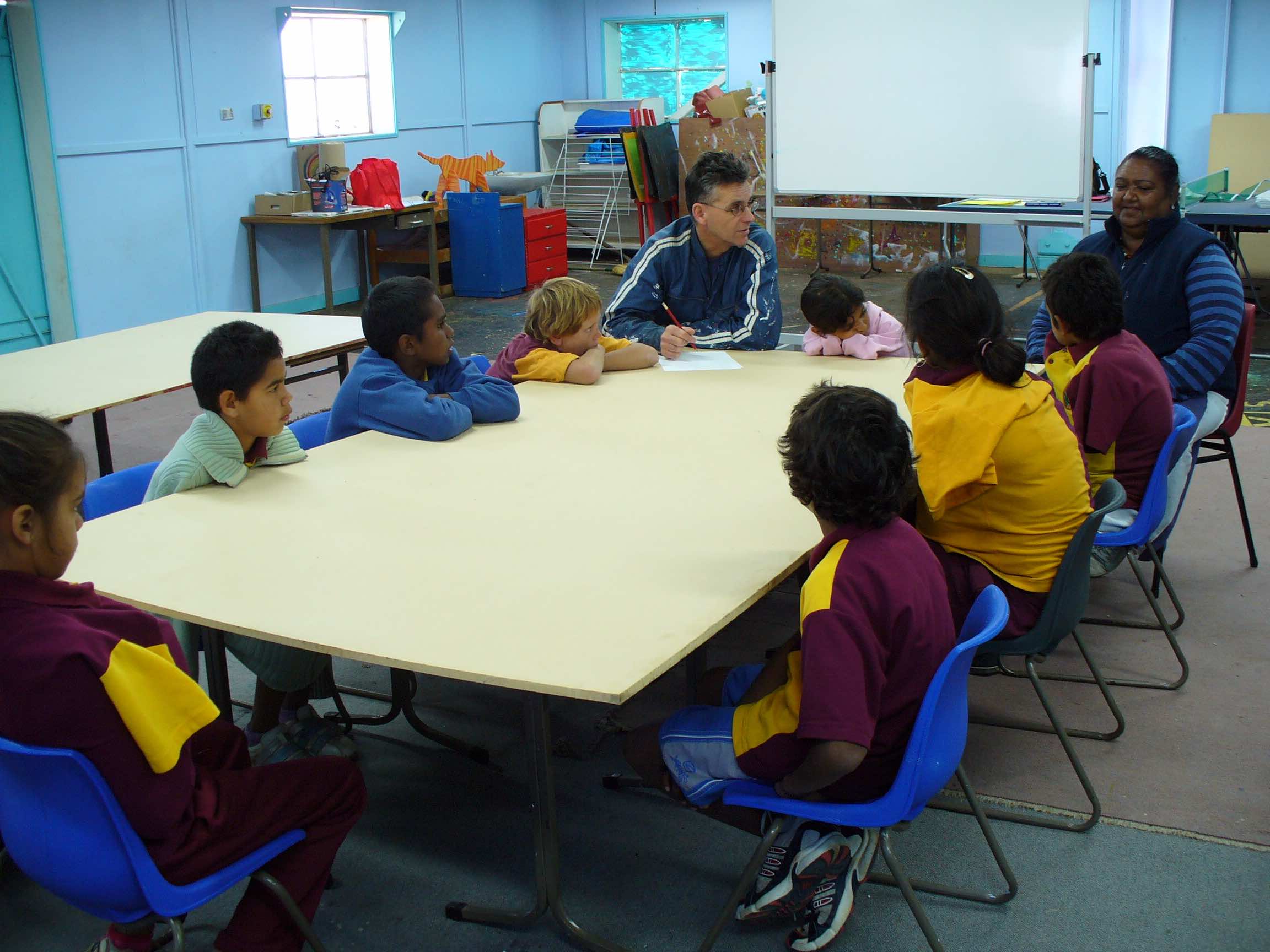New 100-year-old Anzac footage: national film archive

Providing a valuable resource for history teachers, the National Film and Sound Archive of Australia (NFSA) has published a selection of early 20th century films and songs online, to commemorate Anzac Day 2017.
Highlights include a ‘mimic warfare’ training exercise in Sydney’s Moore Park, (with children running on the training battlefield); returned soldiers recovering in hospitals and supporting enlistment campaigns, and a 1916 cinema ad asking Australians to ‘carve’ Anzac Day ‘deep-cut in the Calendar of Time’.

Also featured are images of Edward VIII, then Prince of Wales, decorating Australian soldiers in France, as well as an Australian Rules football match played by troops in London, 1916. Popular songs of the time, such as What did you do on the Great War , Daddy? and Take me back to dear old Blighty have also been published.
The content is available on Sights and Sounds of World War One (http://anzacsightsound.org), a website developed in partnership between Nga Taonga Sound & Vision (NTSV) in New Zealand. The site commemorates the Centenary of the First World War by showcasing audiovisual material held by both archives. It was launched in 2015, and updates of new content will occur throughout the centenary period up to 2019.
The new content complements hundreds of video/audio clips and still images previously available on Sights and Sounds, documenting recruitment and fundraising efforts, the conscription campaign, and the journey of the Australian troops – from embarkation to training and the campaigns in Egypt, France, and other locations.


NEW AUSTRALIAN CONTENT ON SIGHTS AND SOUNDS OF WWI
FILM
- Mimic Warfare (1916): Troops needed to practice warfare before experiencing the real thing. But they probably didn’t expect to have children walking around the ‘battlefield’ watching them!
http://anzacsightsound.org/videos/mimic-warfare
- Carving Anzac Day (1916): An Anzac Day cinema advertisement encouraging Australians to not only mark Anzac Day as a day of significance but to ‘carve’ its meaning into the nation’s psyche
http://anzacsightsound.org/videos/carving-anzac-day
- Fill the gap (1917): Returned Anzacs make a ‘fill-the-gap’ appeal in Melbourne. Their banner reads: ‘We are dying of exhaustion for want of a spell’.
http://anzacsightsound.org/videos/fill-the-gap
- Anzac Hospitals at Home (1919): Returned servicemen engage in handicrafts, music-making and flirting with the nurses while convalescing in an Anzac hospital.
http://anzacsightsound.org/videos/anzac-hospitals-at-home
- With the Aid of the Red Cross (1916): Veterans returning in wheelchairs and with missing limbs gave Australians at home their first sight of the true cost of modern warfare.
http://anzacsightsound.org/videos/with-the-aid-of-the-red-cross
- Royal Decorations (1917): A young Prince of Wales (Edward VIII) decorates Australian soldiers in France.
http://anzacsightsound.org/videos/royal-decorations
- Anzac football in London (1916): During their war service, Australian troops organised Australian Rules football matches across Europe. The highest profile matches were played in the United Kingdom but one-off matches were also played in other countries, including Belgium and France in 1919.
http://anzacsightsound.org/videos/anzac-football-in-london
- The Choice is Yours (1918): A government film gives hope of rehabilitation to the returning war veteran.
http://anzacsightsound.org/videos/the-choice-is-yours
- Learning to Farm (1919): After surviving the bloody battles on the Western Front and elsewhere, able-bodied returning soldiers were offered opportunities to become farmers.
http://anzacsightsound.org/videos/learning-to-farm
- Ask Your Tailor for Anzac Tweed (1921): The factory weaving Anzac Tweed was on the brink of closure when it was taken over by the Returned Soldiers and Sailors Imperial League. It then employed only returned servicemen and their families.
http://anzacsightsound.org/videos/ask-your-tailor-for-anzac-tweed
- France’s South Pacific Soldiers in Sydney (1916): The First World War was truly a global war. What brought this home to Australians was seeing troops from other countries, including France’s Pacific colonies, passing through their country on their way to the Front.
http://anzacsightsound.org/videos/france-s-south-pacific-soldiers-in-sydney
- The Patriot Spirit (1917): Troops from France’s Pacific colonies, on their way to the war in Europe, allowed Australians to display their loyalty and patriotism.
http://anzacsightsound.org/videos/the-patriot-spirit
- Lest We Forget (1925): Thousands of Melburnians turn out in the pouring rain in 1925, to honour the fallen of the First World War.
http://anzacsightsound.org/videos/lest-we-forget
- Sydney Marches to Remember (1926): With their white, starched uniforms and red crosses on their foreheads, 2000 members of the Junior Red Cross make a startling presence at the eleventh anniversary of Anzac Day in Sydney.
http://anzacsightsound.org/videos/sydney-marches-to-remember
SOUND
- What did you do on the Great War , Daddy? (1916): The subject of a child innocently shaming their father for failing to carry out military service was a commonly used theme of war propaganda.
http://anzacsightsound.org/audios/what-did-you-do-in-the-great-war-daddy
- Take me back to dear old Blighty (1916): This song, in which a series of soldiers yearn to return to ‘Blighty’, or Britain, was hugely popular in 1917.
http://anzacsightsound.org/audios/take-me-back-to-dear-old-blighty
- The Rose of No Man’s Land (1918): A sentimental song composed as a tribute to Red Cross battlefield nurses.
http://anzacsightsound.org/audios/the-rose-of-no-man-s-land
- I’m going back to Yarrawonga (1919): The protagonist, simply called ‘Digger’, is sent home after serving at Gallipoli and elsewhere. Digger extols the many virtues of his hometown, Yarrawonga, about 100km west of Albury in NSW. But at home he can’t settle in and decides to re-enlist.
http://anzacsightsound.org/audios/i-m-going-back-again-to-yarrawonga
- Never Mind the Food Controller (1918): An uplifting music hall song, intended to provide comfort during wartime food rationing.
http://anzacsightsound.org/audios/never-mind-the-food-controller
- Every Girl Is a Fisher Girl (1911): This rousing music hall song by Australian-born Florrie Forde, popular during WW1, suggests that every girl is ‘fishing for a mate’.
http://anzacsightsound.org/audios/every-girl-is-a-fisher-girl







